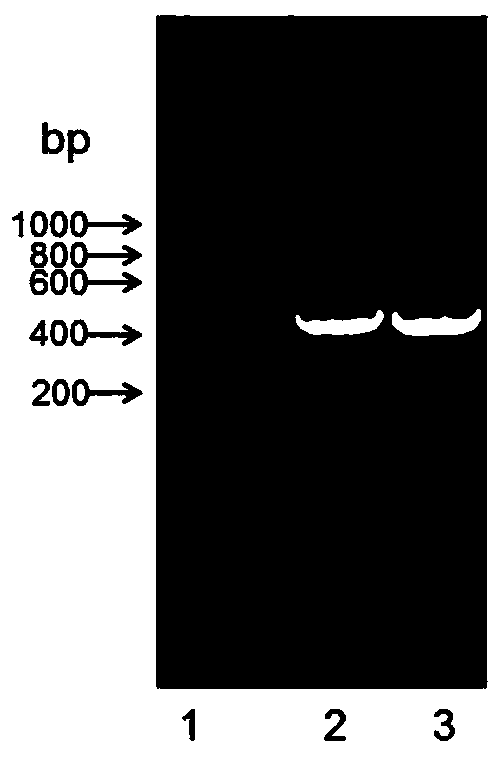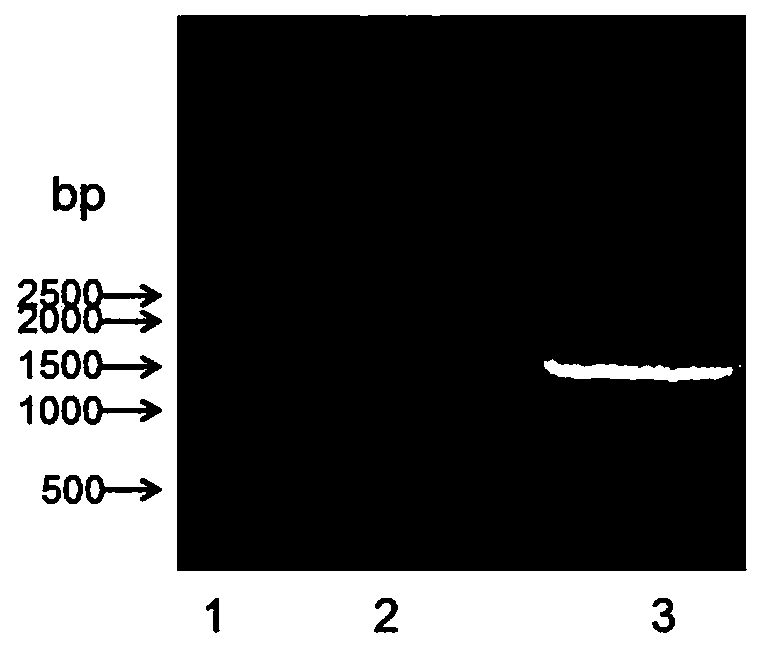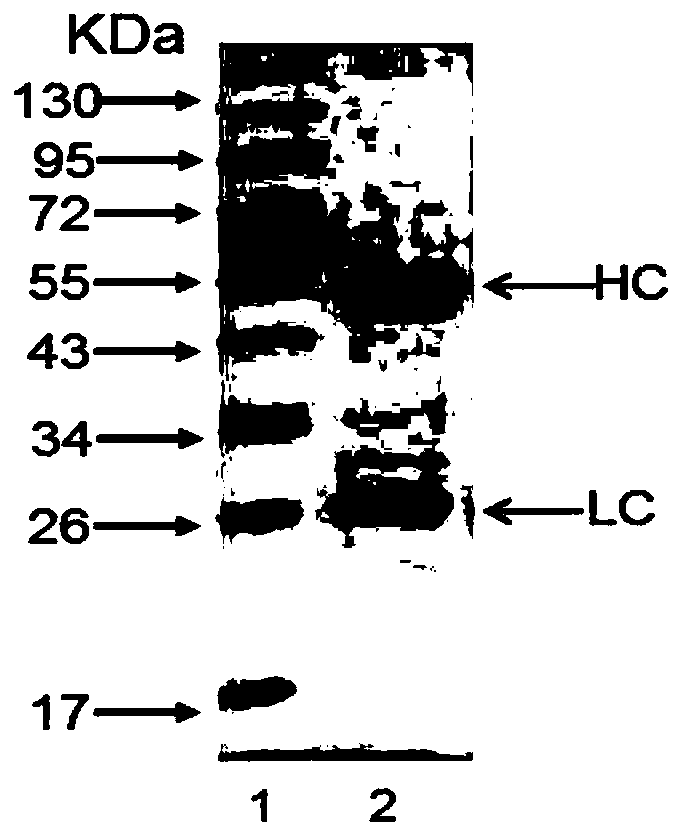Immunohistochemical detection kit for human CD26 and clinical application thereof
A technology of immunohistochemistry and CD26, which is applied in the direction of biological testing, material inspection products, etc., can solve the problems of anticancer drugs without curative effect, achieve the effects of reducing non-specific adsorption, facilitating mass production, and reducing antibody reactions
- Summary
- Abstract
- Description
- Claims
- Application Information
AI Technical Summary
Problems solved by technology
Method used
Image
Examples
Embodiment 1
[0044] Example 1. Preparation of anti-human CD26 hybridoma cell line
[0045] 1. Animal immunization
[0046] BALB / c female mice (purchased from Changzhou Cavens Experimental Animal Co., Ltd.) were immunized with recombinant human CD26 protein (produced by our company) according to the general immunization procedure. For specific immunization conditions, please refer to the "Experimental Guidelines for Antibody Preparation and Use". The serum titer of immunized mice was tracked by indirect ELISA method, and the immunized mouse with the highest serum titer was selected for fusion experiment of mouse splenocytes and mouse myeloma cells.
[0047] 2. Cell Fusion
[0048] (1). Preparation of spleen cells. Immunized mice were plucked from the eyeballs to take blood, put to death by breaking the cervical spine, soaked in 75% (v / v) alcohol for 10 minutes, took out the spleen in a sterile operating table, and placed it in In the cell sieve, fully grind the cells, pass through the si...
Embodiment 2
[0057] Example 2. Determination of the variable region sequence of the anti-human CD26 hybridoma cell line antibody
[0058] 1. Extraction of total RNA from anti-human CD26 hybridoma cells
[0059] Passage the anti-human CD26 hybridoma cell line into a 75T culture flask for culture, digest and centrifuge the cells until the cells reach about 90% confluence, and use the High Pure RNA Isolation Kit (Roche) to perform Total RNA on the anti-human CD26 monoclonal hybridoma cell line extract. Then, using the anti-human CD26 Total RNA as a template, use the RevertAid FirstStrand cDNA Synthesis Kit (Thermo) to reverse-transcribe and amplify the first strand of cDNA. The reaction product is stored at -20°C. For long-term storage, it needs to be stored at -70°C.
[0060] 2. PCR amplification of heavy and light chain variable region genes
[0061] Using the first strand of anti-human CD26 hybridoma cDNA as a template, add 1 μL of cDNA, 5 μL of 10×PCR buffer, 1 μL of upstream and downst...
Embodiment 4
[0065] Example 4. Expression of anti-human CD26 chimeric antibody
[0066] 1. Molecular design and codon optimization of anti-human CD26 chimeric antibody
[0067] The heavy chain variable region sequence of the anti-human CD26 hybridoma cell in Step 3 of Example 3 was directly fused with the human monoclonal antibody IgG1 heavy chain constant region to obtain the heavy chain amino acid sequence of the anti-human CD26 chimeric antibody (SEQ ID No: 9), The light chain sequence of anti-human CD26 hybridoma cells was directly fused with the light chain constant region of human monoclonal antibody IgG1 to obtain the light chain amino acid sequence of anti-human CD26 chimeric antibody (SEQ ID No: 11), and the anti-human CD26 hybridoma cells were respectively Heavy chain and light chain genes were used Optimum Gene TM The heavy chain gene (SEQ ID No: 10) and light chain gene (SEQ ID No: 12) of the anti-human CD26 hybridoma cell of the present invention were obtained after codon opt...
PUM
| Property | Measurement | Unit |
|---|---|---|
| molecular weight | aaaaa | aaaaa |
Abstract
Description
Claims
Application Information
 Login to View More
Login to View More - Generate Ideas
- Intellectual Property
- Life Sciences
- Materials
- Tech Scout
- Unparalleled Data Quality
- Higher Quality Content
- 60% Fewer Hallucinations
Browse by: Latest US Patents, China's latest patents, Technical Efficacy Thesaurus, Application Domain, Technology Topic, Popular Technical Reports.
© 2025 PatSnap. All rights reserved.Legal|Privacy policy|Modern Slavery Act Transparency Statement|Sitemap|About US| Contact US: help@patsnap.com



